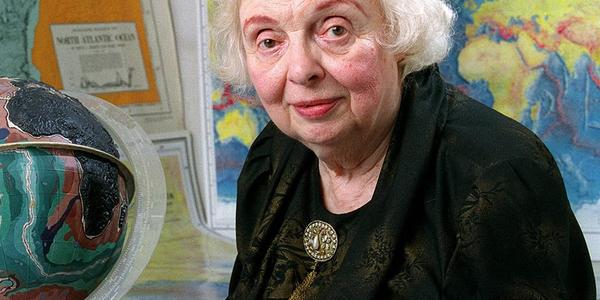NCEI manages the long-term archive of model output files for the hydrodynamic model-based Operation Forecast Systems (OFS) developed and implemented by the National Ocean Service (NOS) to support navigation in U.S. waters. This system is a national network of hydrodynamic models that provides operational nowcast and forecast guidance (out to 48 hours) on parameters such as water levels, water temperature, salinity, and currents. OFS runs on NOAA's High Performance Computing Systems (HPCS) in a standard Coastal Ocean Modeling Framework (COMF) developed by The Center for Operational Oceanographic Products and Services (CO-OPS). Forecast systems run for critical ports, harbors, estuaries, the Great Lakes, and coastal waters in the United States to form a national backbone of real-time data, tidal predictions, data management and operational modeling.
Access Methods
NCEI manages the long-term archives of OFS model output files, which are a few days delayed from the recent (real time) output files available on the CO-OPS THREDDS Server Catalog, or on the CO-OPS OFS information page. The NOAA Big Data Program also provides access to OFS model output data in a trailing 30-day window in the Amazon Web Services (AWS) Open Data Registry.
Data and Grid Types
CO-OPS models station data that provides values for specific locations, and gridded field data with values that cover broader areas. Field data can be presented on one of two grid types:
Curvilinear
Arranges pixels as a 2D grid with rows and columns that can follow curved lines.
Triangular Mesh (Unstructured)
This grid type is used to present field data that includes irregular bathymetry and terrain measurements. Each value correlates with a point on the grid, and connects with adjacent points to form an irregular network of triangles.
Products
| Product | Grid Type | POR | Model Cycle | Output Time Step | Access |
|---|---|---|---|---|---|
| Chesapeake Bay OFS (CBOFS) | curvilinear | 2015-12-31 to Present | 6 hours | 1 hour | |
| Columbia River Estuary OFS (CREOFS) | unstructured | 2014-01-01 to Present | 6 hours | 1 hour | |
| Delaware Bay OFS (DBOFS) | curvilinear | 2014-01-01 to Present | 6 hours | 1 hour | |
| Gulf of Maine OFS (GOMOFS) | curvilinear | 2018-07-10 to Present | 6 hours | 6 hours | |
| Lake Erie OFS (LEOFS) | unstructured | 2017-07-06 to Present | 6 hours | 1 hour | |
| Lake Huron OFS (LHOFS) | curvilinear | 2016-03-06 to Present | 6 hours | 1 hour | |
| Lake Michigan OFS (LMOFS) | curvilinear | 2016-03-01 to Present | 6 hours | 1 hour | |
| Lake Ontario OFS (LOOFS) | curvilinear | 2016-03-01 to Present | 6 hours | 1 hour | |
| Lake Superior OFS (LSOFS) | curvilinear | 2016-03-01 to Present | 6 hours | 1 hour | |
| Northeast Gulf of Mexico OFS (NEGOFS) | unstructured | 2016-03-01 to Present | 6 hours | 1 hour | |
| Northern Gulf of Mexico OFS (NGOFS) | unstructured | 2016-03-01 to Present | 6 hours | 1 hour | |
| Northwest Gulf of Mexico OFS (NWGOFS) | unstructured | 2016-03-01 to Present | 6 hours | 1 hour | |
| Port of New York and New Jersey OFS (NYOFS) | curvilinear | 2014-01-01 to Present | 6 hours | 1 hour | |
| San Francisco Bay OFS (SFBOFS) | unstructured | 2014-01-01 to Present | 6 hours | 1 hour | |
| St. Johns River OFS (SJROFS) | curvilinear | 2014-01-01 to Present | 6 hours | 1 hour | |
| Tampa Bay OFS (TBOFS) | curvilinear | 2014-01-01 to Present | 6 hours | 1 hour |
Project History
For decades, mariners relied on NOAA's Tide Tables for the best estimate of expected water levels based predictions of the astronomical tide (the change in water level due to the gravitational effects of the moon and sun, and the rotation of the Earth). While useful, these tables are limited because they do not account for the impact of wind, atmospheric pressure, and river flow on water level.
The OFS models offer more complete predictions of water levels, as well as currents and other relevant oceanographic variables such as salinity and temperature, based on meteorological, oceanographic, and/or river flow rate data or numeric forecasts.

Prediction Types
Nowcasts and forecasts are scientific predictions about the present and future states of water levels (and possibly currents and other relevant oceanographic variables, such as salinity and temperature) in a coastal area. These predictions rely on either observed data or forecasts from a numerical model.
Nowcasts incorporate recent (and often near real-time) meteorological, oceanographic, and/or river flow rate observations. A nowcast covers the period from the recent past (e.g., the past few days) to the present. Forecasts are based on meteorological, oceanographic, and/or river flow rate predictions for times where observational data will not be available. The last hour of a nowcast initializes the forecast.
Infrastructure
OFS runs on NOAA's High Performance Computing Systems (HPCS) in a standard Coastal Ocean Modeling Framework (COMF) developed by The Center for Operational Oceanographic Products and Services (CO-OPS). COMF is a set of standards and tools for developing and maintaining NOS’s hydrodynamic model–based operational forecast systems. This framework is designed to create standardized, comprehensive software infrastructure to enhance the ease of use, performance, portability, and interoperability of NOS operational forecast systems.



